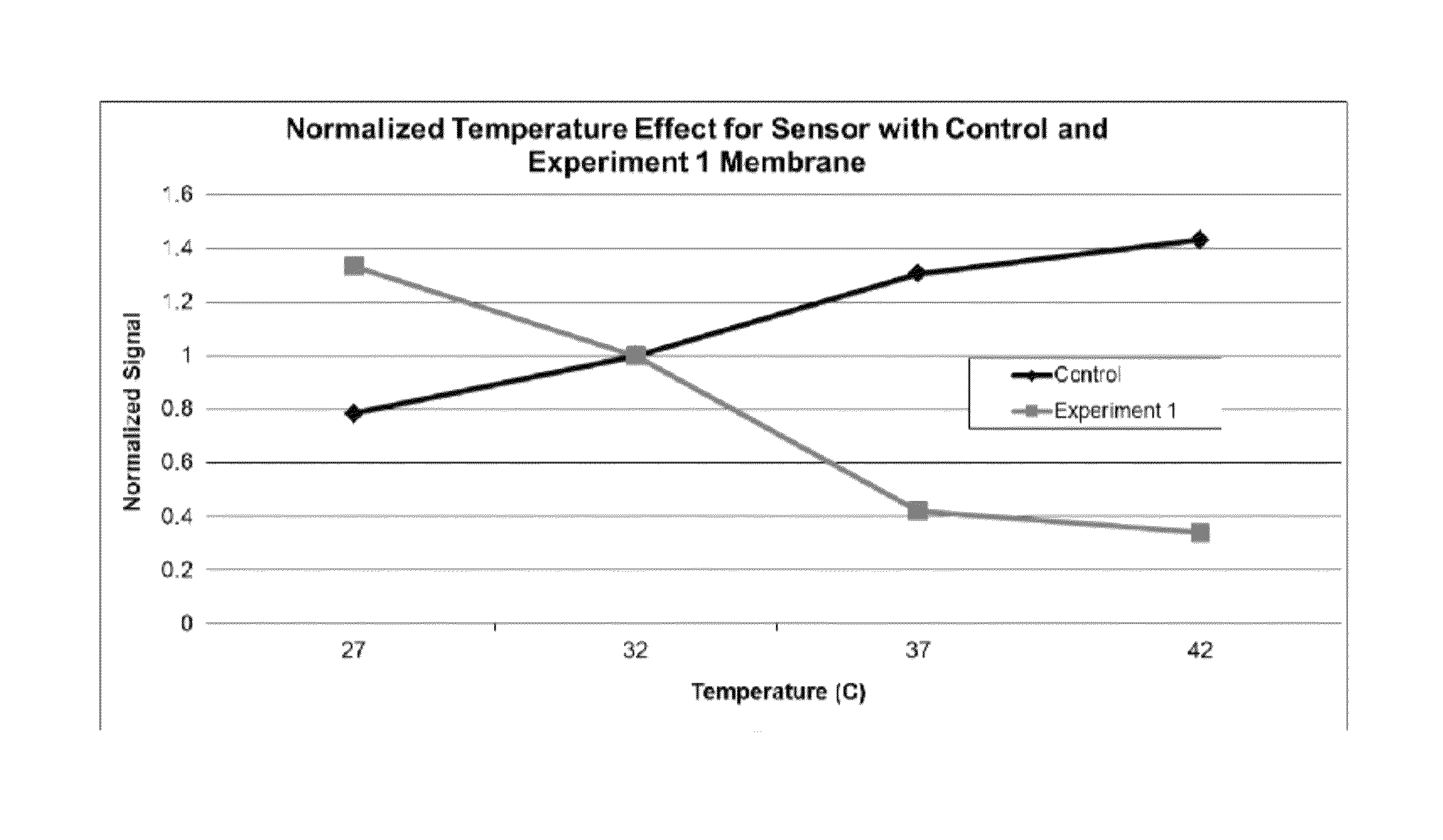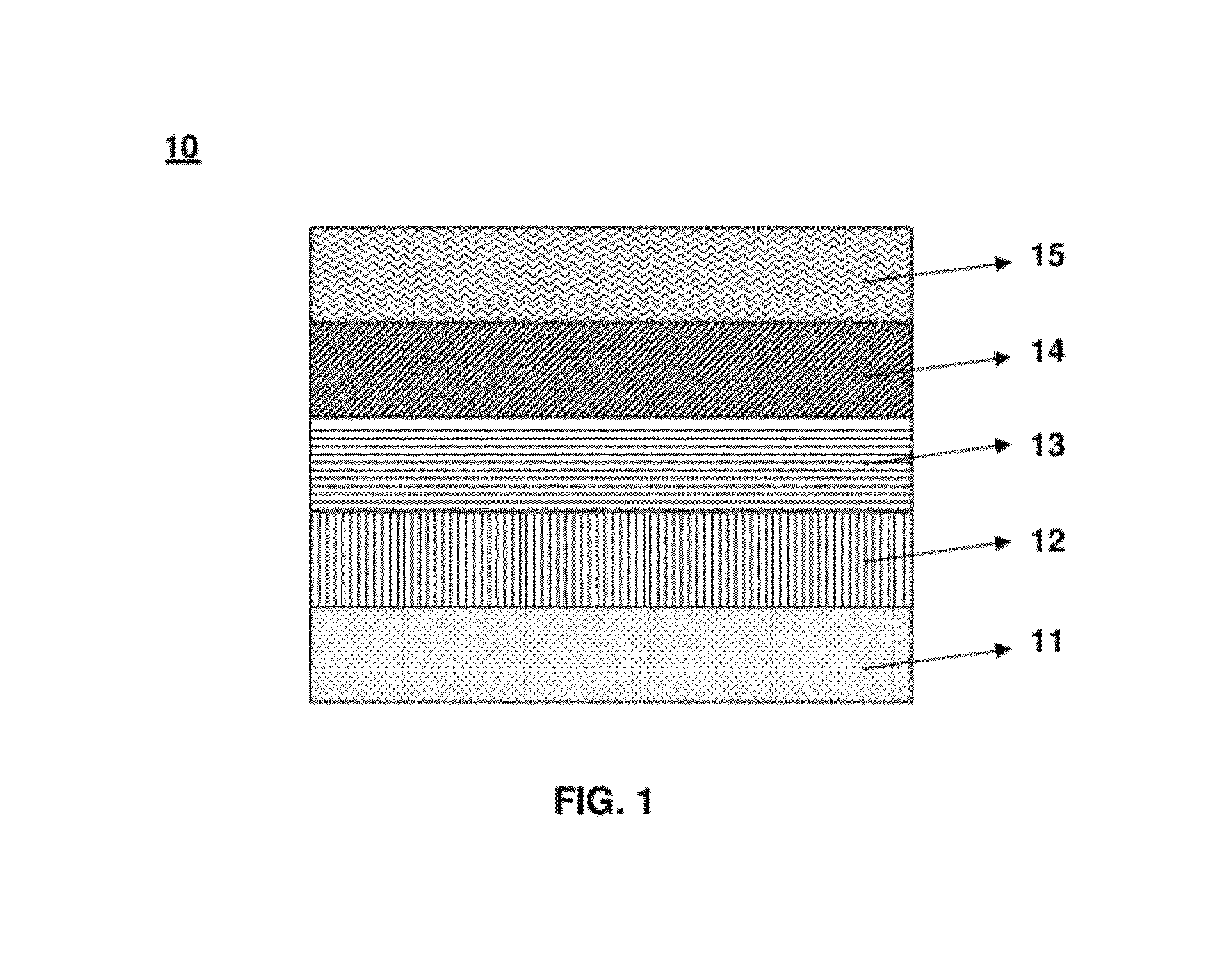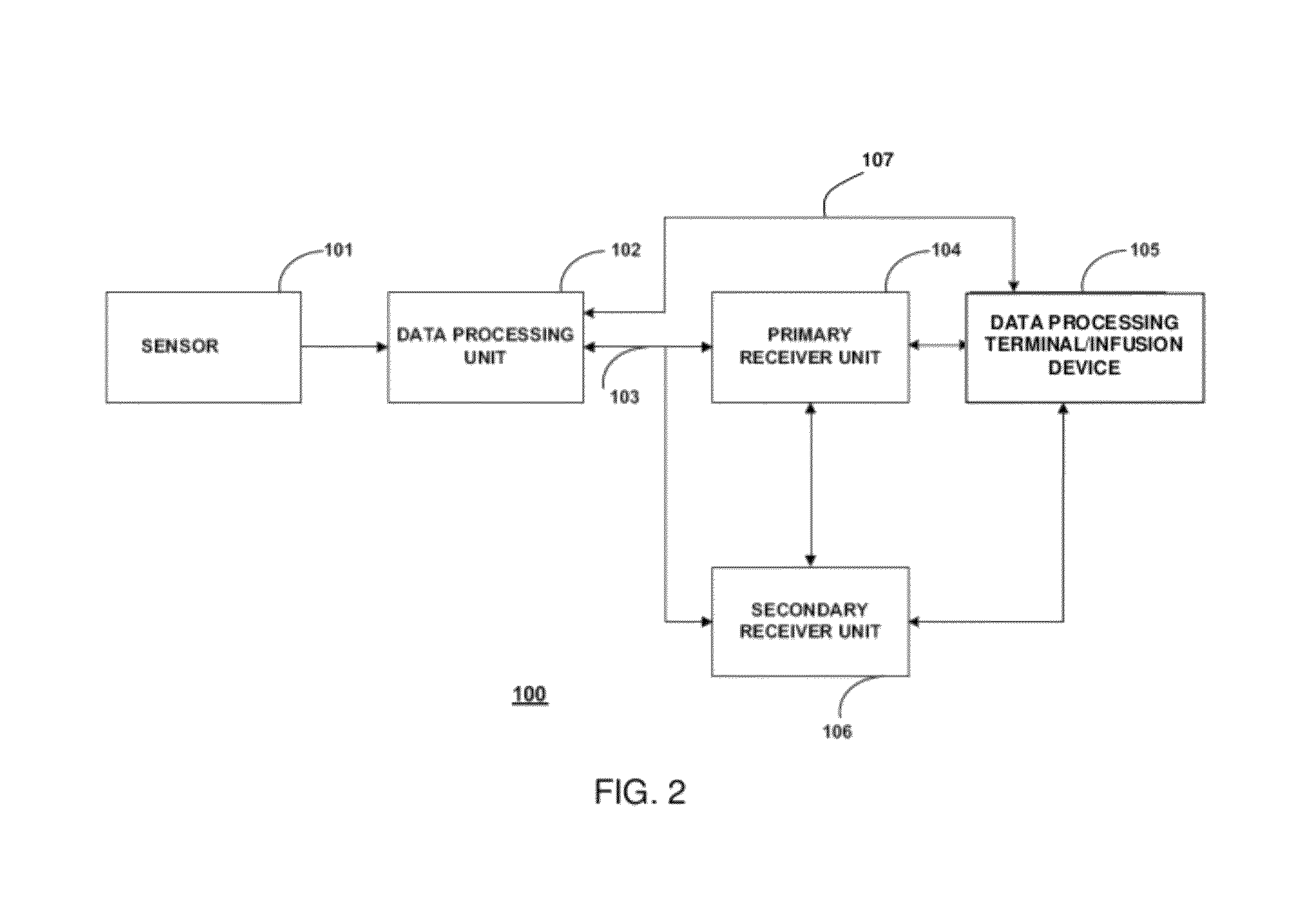Analyte sensors having temperature independent membranes
analyte sensor and temperature independent technology, applied in the field of analyte sensor with temperature independent membrane, can solve the problems of change in the signal generated by the sensor, no longer linearly proportional, and no longer controlled measurement output signal by glucose flux,
- Summary
- Abstract
- Description
- Claims
- Application Information
AI Technical Summary
Benefits of technology
Problems solved by technology
Method used
Image
Examples
example 1
Membrane Formulations Included in a Temperature Independent Membrane Structure
[0134]Experiments were performed to test membrane formulations that may be included a temperature independent membrane structure.
[0135]The membrane formulations were prepared and tested as follows.
Control Membrane Formulation
[0136]Control membranes were formulated as described in U.S. patent application Ser. No. 11 / 734,272, the disclosure of which is incorporated herein by reference in its entirety. Control membranes had a positive correlation with temperature (e.g., sensor current increased as temperature increased, and sensor current decreased as temperature decreased). Control analyte sensors were dip coated with the control membrane formulation and cured for at least 24 hours before use.
experiment 1
Membrane Formulation
[0137]The Experiment 1 membrane formulation was prepared as follows: 164 mg / mL (0.43 mmol / mL) poly(styrene-co-maleic anhydride) polymer (SMA polymer) was mixed with 20 mg / mL (0.109 mmol / mL) dodecylamine (MW=184) and 70 mg / mL (0.117 mmol / mL) poly(propylene glycol)-block-poly(ethylene glycol)-block-poly(propylene glycol) (2-aminopropyl ether) (Jeffamine® M-600, Huntsman International LLC) in 1,4-dioxane. This solution was crosslinked with 100 mg / mL (0.222 mmol / mL) poly(propylene glycol)-block-poly(ethylene glycol)-block-poly(propylene glycol) bis(2-aminopropyl ether) crosslinker (Jeffamine® ED-900 crosslinker, Huntsman International LLC) to form the Experiment 1 membrane solution. The Experiment 1 analyte sensors were dip coated with the Experiment 1 membrane formulation and cured for at least 24 hours before use.
Testing Method
[0138]Sensors were tested in 1 liter of PBS buffer (pH 7) containing 5 mM glucose with a temperature ranging from 27° C. to 42° C. The tempe...
PUM
| Property | Measurement | Unit |
|---|---|---|
| temperatures | aaaaa | aaaaa |
| temperature | aaaaa | aaaaa |
| temperature | aaaaa | aaaaa |
Abstract
Description
Claims
Application Information
 Login to View More
Login to View More - R&D
- Intellectual Property
- Life Sciences
- Materials
- Tech Scout
- Unparalleled Data Quality
- Higher Quality Content
- 60% Fewer Hallucinations
Browse by: Latest US Patents, China's latest patents, Technical Efficacy Thesaurus, Application Domain, Technology Topic, Popular Technical Reports.
© 2025 PatSnap. All rights reserved.Legal|Privacy policy|Modern Slavery Act Transparency Statement|Sitemap|About US| Contact US: help@patsnap.com



